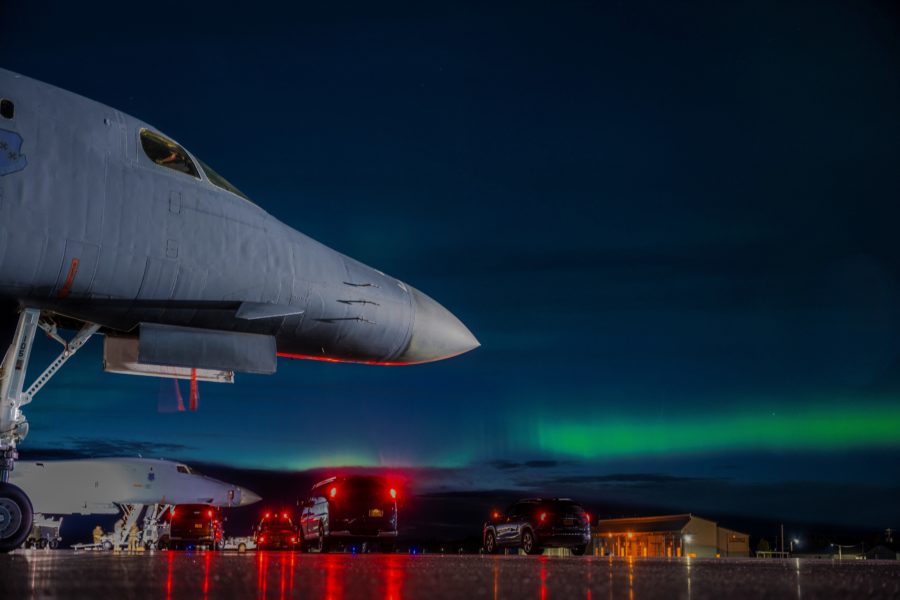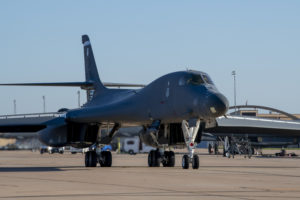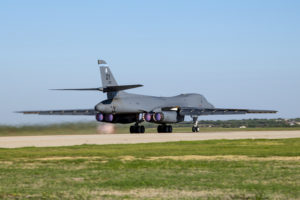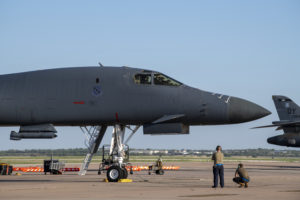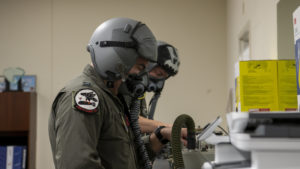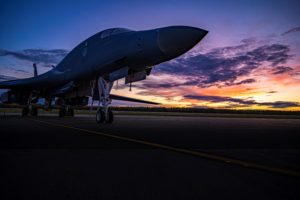B-1B bombers from Dyess Air Force Base, Texas, were everywhere from south of the equator to just outside the Arctic circle last week as they flew missions and training exercises across the Western hemisphere.
On Sept. 7, two Lancers flew from Dyess to the U.S. Southern Command area of responsibility, according to the 12th Air Force. While there, the bombers linked up with USAF tankers over the Caribbean Sea, integrated with partner nations Ecuador and Panama, and “countered illegal, unreported, and unregulated fishing operations off the coast of Ecuador in the vicinity of the Galapagos Islands,” according to a 7th Bomb Wing press release.
Such a mission might seem far removed from the B-1’s purpose of long-range strike, but the bomber has actually conducted similar missions in SOUTHCOM before. Over about the past decade, the platform has been used multiple times to detect and monitor drug trafficking, with its synthetic aperture radar to track and target moving vehicles in the air and at sea, according to a 2016 release.
All told, the B-1 has assisted with the seizure of thousands of kilograms of drugs, specifically cocaine.
This most recent effort was part of a bomber task force mission, the fourth the 7th Bomb Wing has participated in this year and the third that involved flying to and from the continental U.S. in one go. In June, two B-1s flew from Dyess to West Africa and back, and in January, two flew to Japan.
“There are certain things that only Air Force Global Strike Command Airmen can do, and this is one of them. Based on the Airmen we have in this room, we can fly this mission and then turn around and regenerate in a matter of hours—we make it look easy, but it’s tough work,” Col. John C. McClung, 7th Operations Group commander, said in a statement.
Just a few days after the mission to SOUTHCOM, two more B-1s and roughly 50 Airmen from Dyess flew to Eielson Air Force Base, Alaska, Sept. 9-10 to take part in an agile combat employment exercise, “Baked Alaskan.”
While at Eielson, just a few miles from the Arctic circle, the Airmen “tested new technology, [and] simulated joint tactics and long-range strike capabilities with fighter aircraft,” according to another release.
As part of that training, the B-1s integrated with F-35s, F-16s, F-15Cs, E-3Gs, and KC-46s from across the joint force.
Agile combat employment is the Air Force’s operating concept whereby small teams of Airmen operate out of remote or austere locations, fulfill multiple roles as needed, and move quickly. For Baked Alaskan, in particular, a goal of the exercise was to “operationalize the ACE concept by sending Dyess Airmen to a different region,” the release states.
Not only did 7th Bomb Wing Airmen take part in the exercise. Reserve service members, including those from the 7th Bomb Wing’s Reserve associate unit, the 489th Bomb Group, came along as well.
“This exercise showcased the seamless integration of our traditional reservists with their Active-duty counterparts,” said Col. David Martinez, 489th Bomb Group commander, in a statement. “Deliberate planning, training, and inclusion ensures Reserve readiness and accessibility, and preserves the combat power of the Total force.”
